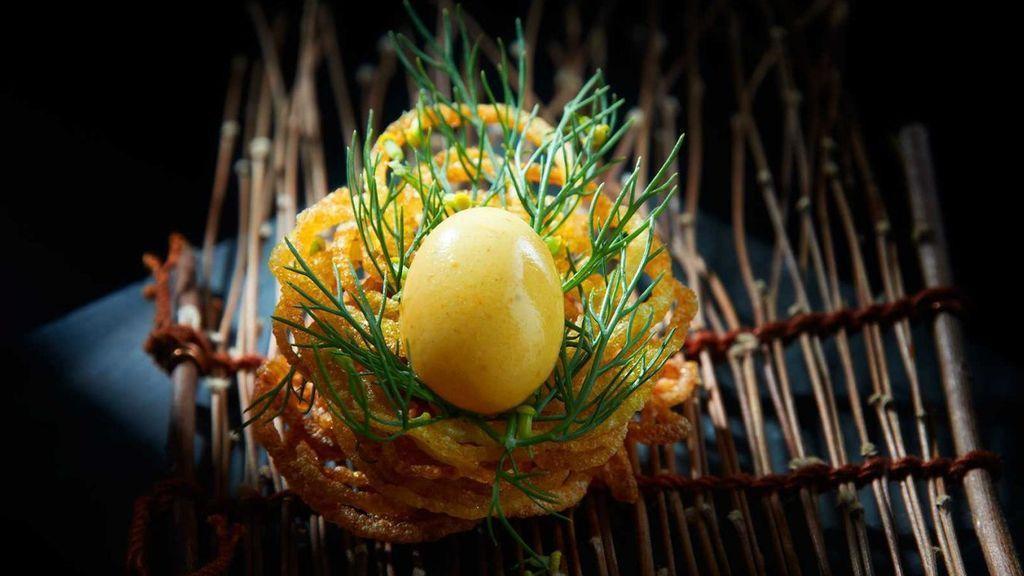
‘Bangkok changed me, and I changed Bangkok,’ says Gaggan Anand, a chef who has projected his own personal transformation onto his plates, redefining the very boundaries of gastronomy.
This summer, while filming my television program The Best Chefs of the World, I traveled across cities and cuisines, meeting chefs in their own universes. Among all these encounters, one of the most indelible portraits was that of Gaggan Anand. In 2025, his restaurant was named the best in Asia and ranked sixth in the world. The impressions I carried away from our conversation gave me a new lens through which to read his cuisine.
When Anand first set foot in Bangkok in 2007, he was stepping not only into a new city but also into his own future. At that time, “fine dining” was virtually absent in Asia. The streets of Bangkok overflowed with food, yet haute cuisine still evoked French clichés. Anand, however, armed with the heritage of his roots, the discipline he absorbed in Ferran Adrià’s kitchen, and a restless, questioning spirit, set out to change the picture. Looking back today, his remark — “Bangkok changed me, and I changed Bangkok” — is no exaggeration. It may sound grandiose, but it is true. In 2010, he opened his own restaurant, while David Thompson opened Nahm in the same year. They were only two voices in a city not yet accustomed to the vocabulary of fine dining. Now Thai chefs populate the world’s most prestigious stages, and the title of World’s Best Female Chef has gone to a Thai woman. While Anand’s own life was transformed, he also irrevocably altered the culinary consciousness of the city and the region, making him one of the living figures of contemporary gastronomy.
Bangkok offered him not only a professional revolution but also a personal transformation. Coming from India’s chaotic, high-pressure atmosphere into the smiling, accommodating rhythms of Thai society, Anand says he himself changed. He became softer, more elastic, more at ease — and that serenity found its way into his plates. The interplay between the soul of a city and the character of a chef is essential to understanding his food. What resonates in his cuisine is a sense of finesse and layered depth — an articulation of his renewed bond with life itself.
When asked about his inspirations, he always returns to people, culture and the journey. Encountering a new culture, he says, is like reading an encyclopedia. “If I don’t travel, I cannot create.” That sentence encapsulates the fact that his cooking is the product of constant movement. Each city, each face, each flavor is more than a memory; it is a key that unlocks creativity. In his plates, elements from different culinary traditions converge — not to cancel one another out, but to amplify and enrich.
Today, his greatest excitement lies in two new ventures opened in Bangkok’s most prestigious business district. One is a restaurant that fuses Thai and Japanese sensibilities, and the other is a café dedicated to coffee culture. These projects allow him to keep renewing himself and to express his passions in different forms. In particular, his affection for coffee and matcha finds a more visible stage here. In conversation, he confesses his admiration for Turkish coffee culture: “It’s incredible that people drink coffee at all hours of the day — even at night.” For him, coffee has long since ceased to be merely a beverage; it has become a symbol of sociability, ritual and cross-cultural connection.
His relationship with ingredients also sets him apart from most chefs. While many lean on vanilla as the universal aroma of comfort, Anand turns to the rose. “People believe in vanilla, I believe in rose,” he says, embracing a fragrance both fragile and forceful. His delight in our traditional rose-flavored Turkish delights (lokum) is palpable; in that moment, one sees how his cooking becomes a form of cultural bridge-building. He recalls being captivated by Istanbul’s Spice Market and draws a surprising parallel: When Ferran Adrià created his “sheet of fruit,” Anand saw a kinship with our fruit leather, pestil. That sense of discovery continues to animate his practice.
Perhaps the clearest example of his creativity is encapsulated in what he calls “Gaggan in a Bite.” In this single morsel, he redefines curry not as a dish but as a transformative ingredient. He places a raw scallop inside a crisp, airy shell and tops it with a cold layer of curry. Traditionally conceived as hot, spicy and saucy, curry here acquires a completely new identity with a single gesture. It is more than a dish: it is a lesson in questioning assumptions, in transgressing boundaries, in making food a medium of thought as well as taste.
His journey offers a vital lesson for young chefs: a cuisine can only be redefined by interrogating its rules. Disciplines, habits, the recipes we are told “must” be followed — all must be overturned to create a future. Anand’s story shows how personal metamorphosis and culinary revolution can be intertwined. In his plates, appearance, flavor and narrative converge. Each bite leaves not only a taste on the palate but an imprint on the mind. What makes him exceptional is precisely this: he serves not only food but also ideas.
Sitting across the table from him, one feels not only in the presence of a chef but of a mind. Through food, Gaggan manages to reread the world and to create a new language by breaking rules. Behind his plates lies not just technical mastery but also a reckoning with life. The spark in his eyes fuses with the boldness on his plates. What he left me with was not merely a lingering flavor, but the weight of witnessing the transformation of a city, a culture, a man. In that moment, I realized that his story is itself a lesson beyond gastronomy: to embody change.